The University of New Caledonia (UNC) has been strongly involved in the establishment of the Pacific Islands Universities Research Network (PIURN) since its creation in 2014. Collaborations are thus regularly put in place thanks to PIURN.
This is currently the case for the project “air pollution in Pacific island cities: PM 2.5 measurements, its elemental composition and bio-monitoring”, funded by the University of the South Pacific (USP), with the participation of Macquarie University (Sydney, Australia), the University of New Caledonia (Institute of Exact and Applied Sciences, ISEA) and Scal’air (Caledonian air quality monitoring association).
Thus, several researchers have been welcomed to Nouméa since the end of March 2019 in order to continue a measurement campaign started in Suva and Lautoka (Fiji):
- Dr. Francis Mani, PhD, senior-lecturer at USP, and his student Shavneet Ambar Mani – present in New Caledonia for three weeks in total – to install a large volume sampler to collect small size dust (less than 2.5 μm).
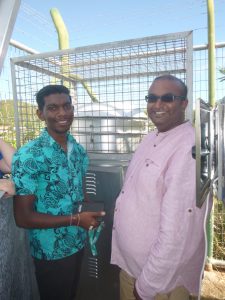
Lowcost dust collectors were also deployed by Dr. Cynthia Isley and Professor Mark Patrick Taylor, both researchers at Macquarie University, with the help of Scal’air. They allow a continuous analysis of dust for an air quality wide-scale monitoring.
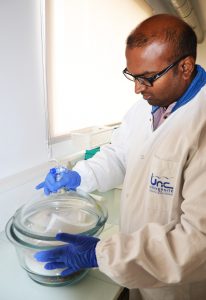 |
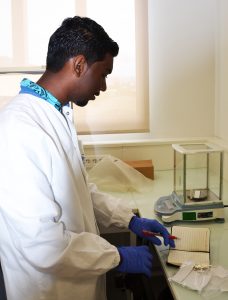 |
|
Dr. FrancisMani and Shavneet Ambar Mani in one of ISEA laboratories at the UNC |
|
Dr. Cynthia Isley and Dr. Thomas Quiniou
Thanks to the valuable logistical and technical support provided by Scal’air, this team of researchers was able to benefit from its site based in Logicoop and its technicians for various devices installation.
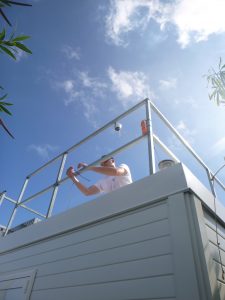 |
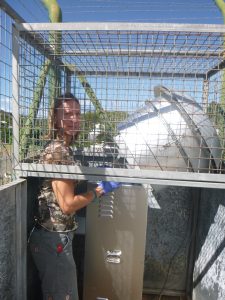 |
Installation of a lowcost sensor at Scal’air site in Logicoop by a Scal’air technician and Monika Le Mestre from UNC
This campaign will last three months and the follow-up will be ensured by the UNC (ISEA), including Monika Le Mestre and Franck Bouilleret, for technical support, as well as Drs. Christine Laporte-Magoni, Arnaud Serres, Thomas Quiniou and Peggy Gunkel-Grillon.
In parallel, lichens, bio-indicators of dust exposure will be collected. The three methodological approaches (large volume sampler, lowcost continuous sensor and bio-lichen indication) will be compared.
The main objective of this project is to determine the chemical composition of these small dust that penetrate deeply into the respiratory system, in order to determine whether they can potentially present a health hazard in the event of significant exposure.
This project started in October 2017 and the measurement campaigns will be completed by the end of 2019. After a time required for analyses, results are expected by the end of the year 2020.
